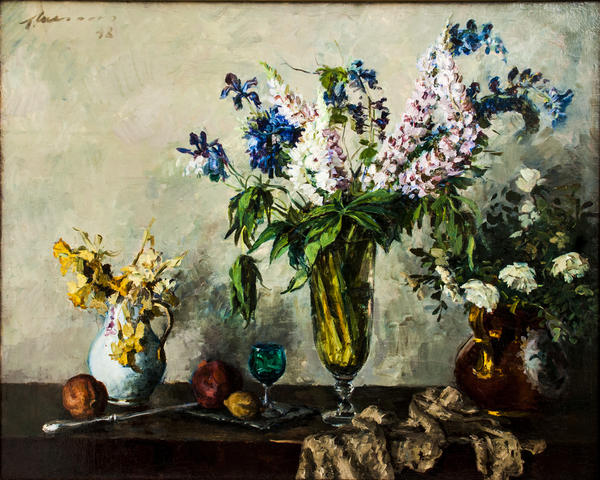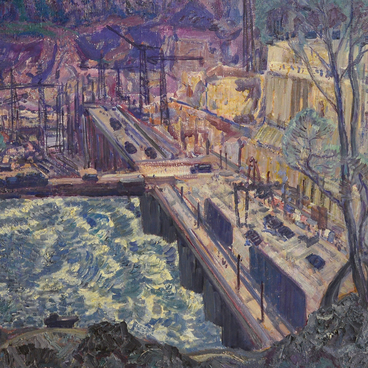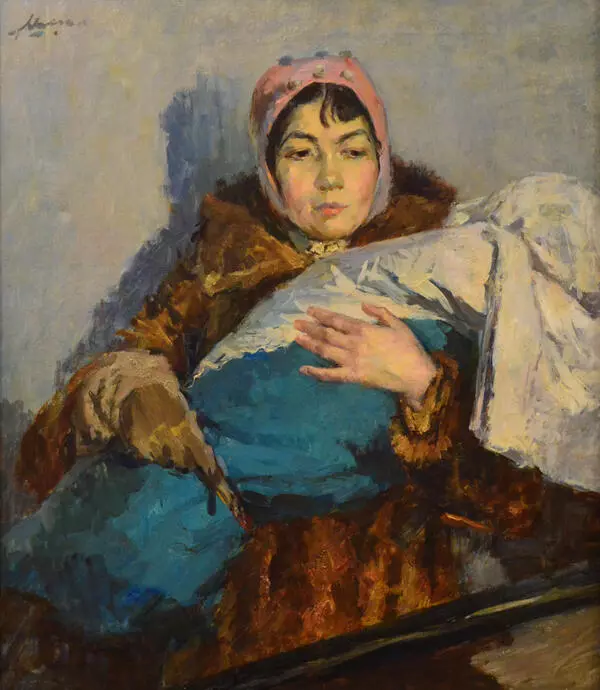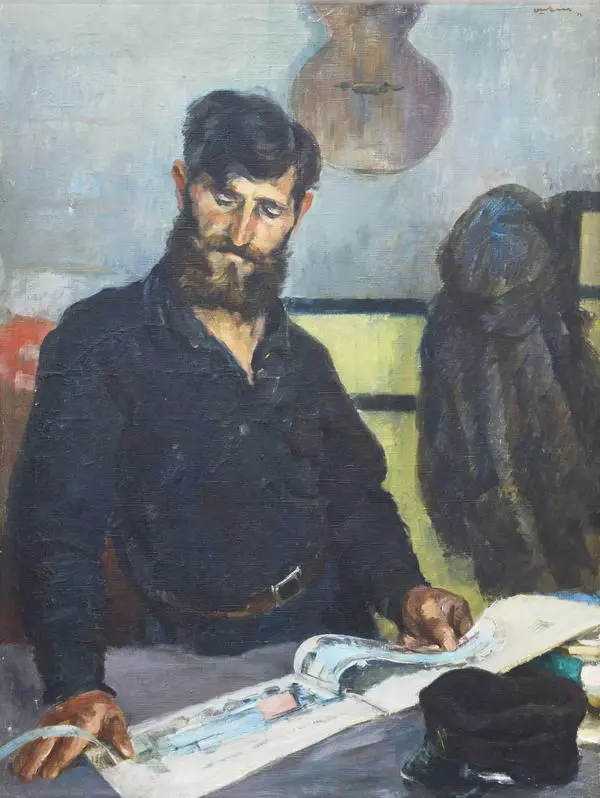Grigoriy Shegal crated the Lupinus and Pomegranates still-life painting in 1948. The word lupinus in the name of the painting is a calque from Latin, as in the Russian language those flowers are called lupines.
Lupinus and Pomegranates
Время создания
1948
Размер
80x99,5 cm
Техника
oil on canvas
Коллекция
2
Открыть в приложении#1
Grigoriy Shegal
Lupinus and Pomegranates
#2
#9
In his painting, Shegal carefully worked out the texture of each item, i.e. polished tabletop, rough skin of fruit, soft folds of fabric, transparent glass and shiny faience of vessels.
The way, how Shegal painted light and air in this picture, is visibly influenced by French impressionists as he was fascinated with their creative work since he was a student. He took an interest in the works of Dutch masters of painting, too.
#7
While working over this painting, the artist used traditional symbols of the Dutch flower still-life paintings. The bunches of flowers in the vases are at different stages of wilting: the lupines look absolutely fresh, the white flowers to the right dropped a bit, and the yellow ones to the left seem to be almost withered. Such elements on old-time still-life paintings symbolized short-life beauty and brevity of existence. One more nuance referring to Dutch painting is the knife on the table. Artists of the 17th century used to picture heavy knives with elegant handles and salt cellars quite often on their still-life paintings.
#8
Grigoriy Shegal started to paint already as a child. His father was fond of painting and music, striving to develop an artistic taste in his children. Shegal decided to become a painter when he served as an apprentice at an engraving workshop. He did not go to school, but he managed to study the whole course just in three years and passed exams as a non-resident student in order to receive the general education certificate.
#4
In 1912, 23-year old Grigoriy Shegal moved to Petersburg and entered the Drawing School at the Society for the Encouragement of Arts. He had famous artists of that time as teachers: Gugo Zaleman, Nicholas Roerich, Ivan Bilibin. From them Shegal learnt how to work with colour, and in all his works he paid special attention to choosing colours. His monograph Colouring in Painting, published in 1957, was devoted to this topic.
#10
In different periods, Shegal created paintings on revolutionary and historical themes, genre painting in the spirit of socialist realism, portraits of workers and students. But still-life paintings and landscapes remained his favourite areas in creative work.
#11
Belgorod State Art Museum
читать дальшескрыть
00:00
00:00
1x
Lupinus and Pomegranates
Время создания
1948
Размер
80x99,5 cm
Техника
oil on canvas
Коллекция
2
Открыть в приложении
Поделиться






